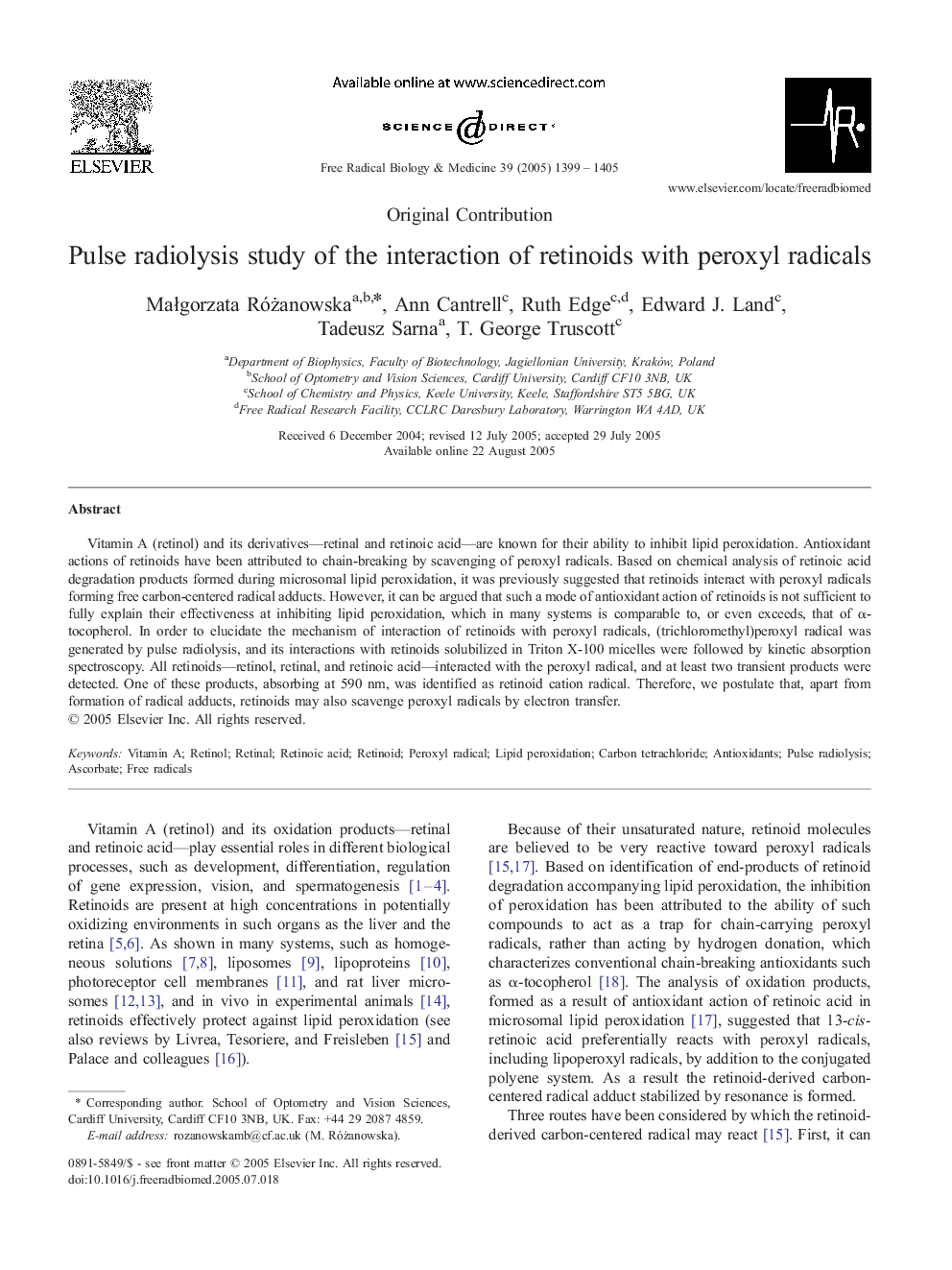| Article ID | Journal | Published Year | Pages | File Type |
|---|---|---|---|---|
| 10739530 | Free Radical Biology and Medicine | 2005 | 7 Pages |
Abstract
Vitamin A (retinol) and its derivatives-retinal and retinoic acid-are known for their ability to inhibit lipid peroxidation. Antioxidant actions of retinoids have been attributed to chain-breaking by scavenging of peroxyl radicals. Based on chemical analysis of retinoic acid degradation products formed during microsomal lipid peroxidation, it was previously suggested that retinoids interact with peroxyl radicals forming free carbon-centered radical adducts. However, it can be argued that such a mode of antioxidant action of retinoids is not sufficient to fully explain their effectiveness at inhibiting lipid peroxidation, which in many systems is comparable to, or even exceeds, that of α-tocopherol. In order to elucidate the mechanism of interaction of retinoids with peroxyl radicals, (trichloromethyl)peroxyl radical was generated by pulse radiolysis, and its interactions with retinoids solubilized in Triton X-100 micelles were followed by kinetic absorption spectroscopy. All retinoids-retinol, retinal, and retinoic acid-interacted with the peroxyl radical, and at least two transient products were detected. One of these products, absorbing at 590 nm, was identified as retinoid cation radical. Therefore, we postulate that, apart from formation of radical adducts, retinoids may also scavenge peroxyl radicals by electron transfer.
Keywords
Related Topics
Life Sciences
Biochemistry, Genetics and Molecular Biology
Ageing
Authors
MaÅgorzata Różanowska, Ann Cantrell, Ruth Edge, Edward J. Land, Tadeusz Sarna, T. George Truscott,
